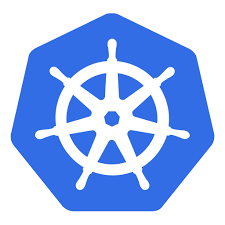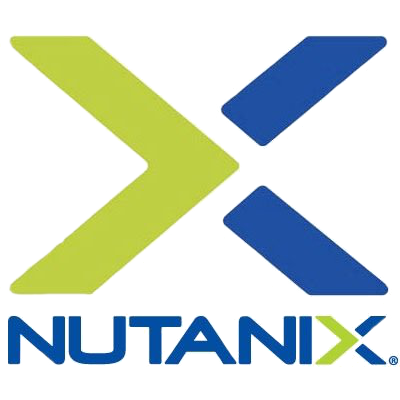Working with Pods
Hai semuanya, di materi kali ini kita akan membahas Working with pods in kubernetes cluster. Seperti yang telah kita bahas di artikel sebelumnya mekipun kita sebetulnnya akan jarang sekali membuat pods secara explicit tpi tidak ada salahnya untuk kita bahas lebih detail ya tentang pod ini.
Pods are designed as relatively ephemeral, disposable entities. When a Pod gets created (directly by you, or indirectly by a controller), the new Pod is scheduled to run on a Node in your cluster. The Pod remains on that node until the Pod finishes execution, the Pod object is deleted, the Pod is evicted for lack of resources, or the node fails.
Note: Restarting a container in a Pod should not be confused with restarting a Pod. A Pod is not a process, but an environment for running container(s). A Pod persists until it is deleted.
When you create the manifest for a Pod object, make sure the name specified is a valid DNS subdomain name.
Untuk pembahasan lebih lanjutnya, seperti biasa kita akan bagi menjadi beberapa bagian diantaranya:
- Pods and Controllers
- Pod templates
- Pod update and replacement
- Pod networking
- Resource sharing in pods
- Privileged mode for containers
- Static pods
- Container probes
Ok langsung ja kita bahas materi yang pertama
Pods and Controllers
Pods are designed as relatively ephemeral, disposable entities.
You can use workload resources to create and manage multiple Pods for you. A controller for the resource handles replication and rollout and automatic healing in case of Pod failure. For example, if a Node fails, a controller notices that Pods on that Node have stopped working and creates a replacement Pod. The scheduler places the replacement Pod onto a healthy Node.
Here are some examples of workload resources that manage one or more Pods:
- Deployment, managed replicated application on your cluster
- StatefulSet, managed deployment and scalling of a set of Pods with durable storage and persisten identifiers for each Pod.
- DaemonSet, Ensures a copy of a Pod is running accress a set of nodes in a cluster
Pod templates
Controllers for workload resources create Pods from a pod template and manage those Pods on your behalf.
PodTemplates are specifications for creating Pods, and are included in workload resources such as Deployments, Jobs, and DaemonSets.
Each controller for a workload resource uses the PodTemplate inside the workload object to make actual Pods. The PodTemplate is part of the desired state of whatever workload resource you used to run your app.
The sample below is a manifest for a simple Job with a template that starts one container. The container in that Pod prints a message then pauses.
apiVersion: batch/v1
kind: Job
metadata:
name: hello
spec:
template:
# This is the pod template
spec:
containers:
- name: hello
image: busybox:1.28
command: ['sh', '-c', 'echo "Hello, Kubernetes!" && sleep 3600']
restartPolicy: OnFailure
# The pod template ends hereModifying the pod template or switching to a new pod template has no direct effect on the Pods that already exist. If you change the pod template for a workload resource, that resource needs to create replacement Pods that use the updated template.
For example, the StatefulSet controller ensures that the running Pods match the current pod template for each StatefulSet object. If you edit the StatefulSet to change its pod template, the StatefulSet starts to create new Pods based on the updated template. Eventually, all of the old Pods are replaced with new Pods, and the update is complete.
Note: Each workload resource implements its own rules for handling changes to the Pod template.
Pod update and replacement
As mentioned in the previous section, when the Pod template for a workload resource is changed, the controller creates new Pods based on the updated template instead of updating or patching the existing Pods.
Kubernetes doesn’t prevent you from managing Pods directly. It is possible to update some fields of a running Pod, in place. However, Pod update operations like patch, and replace have some limitations:
-
Most of the metadata about a Pod is immutable. For example, you cannot change the
namespace,name,uid, orcreationTimestampfields; thegenerationfield is unique. It only accepts updates that increment the field’s current value. -
If the
metadata.deletionTimestampis set, no new entry can be added to themetadata.finalizerslist. -
Pod updates may not change fields other than
spec.containers[*].image,spec.initContainers[*].image,spec.activeDeadlineSecondsorspec.tolerations. Forspec.tolerations, you can only add new entries.
Jika kita coba seperti berikut:
➜ ~ kubectl run nginx --image nginx:mainline --port 80
pod/nginx created
➜ ~ kubectl get pods
NAME READY STATUS RESTARTS AGE
nginx 1/1 Running 0 33s
➜ ~ kubectl patch pod nginx --type='json' -p='[{"op": "replace", "path": "/spec/containers/0/image", "value": "nginx:latest"}]'
pod/nginx patched
➜ ~ kubectl describe pod nginx
Name: nginx
Namespace: default
Priority: 0
Node: minikube/192.168.49.2
Start Time: Fri, 22 Apr 2022 06:54:59 +0700
Labels: run=nginx
Annotations: <none>
Status: Running
IP: 172.17.0.3
IPs:
IP: 172.17.0.3
Containers:
nginx:
Container ID: docker://02537095696f9ddcb0075dc26267004fbf71ed50cdd419ce3ca576d372fb519e
Image: nginx:latest
Port: 80/TCP
Host Port: 0/TCP
State: Running
Started: Fri, 22 Apr 2022 07:13:10 +0700
Last State: Terminated
Reason: Completed
Exit Code: 0
Started: Fri, 22 Apr 2022 06:58:34 +0700
Finished: Fri, 22 Apr 2022 07:13:10 +0700
Ready: True
Restart Count: 2
Environment: <none>
Mounts:
/var/run/secrets/kubernetes.io/serviceaccount from kube-api-access-b8jcq (ro)
Conditions:
Type Status
Initialized True
Ready True
ContainersReady True
PodScheduled True
QoS Class: BestEffort
Node-Selectors: <none>
Tolerations: node.kubernetes.io/not-ready:NoExecute op=Exists for 300s
node.kubernetes.io/unreachable:NoExecute op=Exists for 300s
Events:
Type Reason Age From Message
---- ------ ---- ---- -------
Normal Scheduled 21m default-scheduler Successfully assigned default/nginx to minikube
Normal Pulling 21m kubelet Pulling image "nginx:mainline"
Normal Pulled 21m kubelet Successfully pulled image "nginx:mainline" in 5.4689168s
Normal Pulled 18m kubelet Container image "nginx" already present on machine
Normal Created 3m33s (x3 over 21m) kubelet Created container nginx
Normal Started 3m33s (x3 over 21m) kubelet Started container nginx
Normal Killing 3m33s (x2 over 18m) kubelet Container nginx definition changed, will be restarted
Normal Pulled 3m33s kubelet Container image "nginx:latest" already present on machine
Pod networking
Each Pod is assigned a unique IP address for each address family. Every container in a Pod shares the network namespace, including the IP address and network ports. Inside a Pod (and only then), the containers that belong to the Pod can communicate with one another using localhost. When containers in a Pod communicate with entities outside the Pod, they must coordinate how they use the shared network resources (such as ports). Within a Pod, containers share an IP address and port space, and can find each other via localhost.
For example if you run multiple containers with same image it will failed to start
Jika di jalankan seperti berikut:
➜ kubernetes kubectl apply -f .\03-workloads\01-working-pods\failed-port-same-binding.yaml
pod/webapps-same-image created
➜ kubernetes kubectl get pods webapps-same-image
NAMESPACE NAME READY STATUS RESTARTS AGE
default webapps-same-image 1/2 Error 1 (8s ago) 12s
➜ kubernetes kubectl describe pod webapps-same-image
Name: webapps-same-image
Namespace: default
Priority: 0
Node: minikube/192.168.49.2
Start Time: Fri, 22 Apr 2022 10:53:31 +0700
Labels: app=webapps-same-image
Annotations: <none>
Status: Running
IP: 172.17.0.4
IPs:
IP: 172.17.0.4
Containers:
nginx1:
Image: nginx:mainline
Port: 80/TCP
Host Port: 0/TCP
State: Running
Started: Fri, 22 Apr 2022 10:53:32 +0700
Ready: True
Restart Count: 0
nginx2:
Image: nginx
Port: 80/TCP
Host Port: 0/TCP
State: Waiting
Reason: CrashLoopBackOff
Last State: Terminated
Reason: Error
Exit Code: 1
Started: Fri, 22 Apr 2022 10:59:50 +0700
Finished: Fri, 22 Apr 2022 10:59:52 +0700
Ready: False
Restart Count: 7
➜ kubernetes ✗ kubectl logs webapps-same-image -c nginx2
/docker-entrypoint.sh: /docker-entrypoint.d/ is not empty, will attempt to perform configuration
/docker-entrypoint.sh: Looking for shell scripts in /docker-entrypoint.d/
/docker-entrypoint.sh: Launching /docker-entrypoint.d/10-listen-on-ipv6-by-default.sh
10-listen-on-ipv6-by-default.sh: info: Getting the checksum of /etc/nginx/conf.d/default.conf
10-listen-on-ipv6-by-default.sh: info: Enabled listen on IPv6 in /etc/nginx/conf.d/default.conf
/docker-entrypoint.sh: Launching /docker-entrypoint.d/20-envsubst-on-templates.sh
/docker-entrypoint.sh: Launching /docker-entrypoint.d/30-tune-worker-processes.sh
/docker-entrypoint.sh: Configuration complete; ready for start up
2022/04/22 03:54:25 [emerg] 1#1: bind() to 0.0.0.0:80 failed (98: Address already in use)
nginx: [emerg] bind() to 0.0.0.0:80 failed (98: Address already in use)
nginx: [emerg] bind() to [::]:80 failed (98: Address already in use)
2022/04/22 03:54:25 [notice] 1#1: try again to bind() after 500ms
2022/04/22 03:54:25 [emerg] 1#1: still could not bind()
Sekarang jika kita coba ganti imagenya dengan bitnami/nginx yang meng-expose port 8080 dengan perintah seperti berikut:
kubectl patch pods webapps-same-image --type='json' -p '[{"op": "replace", "path": "/spec/containers/1/image", "value": "bitnami/nginx"}]'Sekarang jika kita jalankan dan lihat hasilnya seperti berikut:
➜ kubernetes ✗ kubectl patch pods webapps-same-image --type='json' -p '[{"op": "replace", "path": "/
spec/containers/1/image", "value": "bitnami/nginx"}]'
pod/webapps-same-image patched
➜ kubernetes kubectl get pods webapps-same-image
NAME READY STATUS RESTARTS AGE
webapps-same-image 2/2 Running 8 (2m55s ago) 9m16s
➜ 01-working-pods kubectl exec pod/webapps-same-image -c nginx1 -- curl localhost
% Total % Received % Xferd Average Speed Time Time Time Current
Dload Upload Total Spent Left Speed
100 615 100 615 0 0 600k 0 --:--:-- --:--:-- --:--:-- 600k
<!DOCTYPE html>
<html>
<head>
<title>Welcome to nginx!</title>
<style>
html { color-scheme: light dark; }
body { width: 35em; margin: 0 auto;
font-family: Tahoma, Verdana, Arial, sans-serif; }
</style>
</head>
<body>
<h1>Welcome to nginx!</h1>
<p>If you see this page, the nginx web server is successfully installed and
working. Further configuration is required.</p>
<p>For online documentation and support please refer to
<a href="http://nginx.org/">nginx.org</a>.<br/>
Commercial support is available at
<a href="http://nginx.com/">nginx.com</a>.</p>
<p><em>Thank you for using nginx.</em></p>
</body>
</html>
➜ 01-working-pods kubectl exec pod/webapps-same-image -c nginx1 -- curl localhost:8080
% Total % Received % Xferd Average Speed Time Time Time Current
Dload Upload Total Spent Left Speed
100 615 100 615 0 0 600k 0 --:--:-- --:--:-- --:--:-- 600k
<!DOCTYPE html>
<html>
<head>
<title>Welcome to nginx!</title>
<style>
html { color-scheme: light dark; }
body { width: 35em; margin: 0 auto;
font-family: Tahoma, Verdana, Arial, sans-serif; }
</style>
</head>
<body>
<h1>Welcome to nginx!</h1>
<p>If you see this page, the nginx web server is successfully installed and
working. Further configuration is required.</p>
<p>For online documentation and support please refer to
<a href="http://nginx.org/">nginx.org</a>.<br/>
Commercial support is available at
<a href="http://nginx.com/">nginx.com</a>.</p>
<p><em>Thank you for using nginx.</em></p>
</body>
</html>
Resource sharing in pods
Pods enable data sharing among their containers. A Pod can specify a set of shared storage volumes. All containers in the Pod can access the shared volumes, allowing those containers to share data. Volumes also allow persistent data in a Pod to survive in case one of the containers within needs to be restarted. See Storage for more information on how Kubernetes implements shared storage and makes it available to Pods.
For example we’ll create 2 containers using same volumes using hostPath driver, yang perlu kita siapkan adalah file index.html dan pods.yaml seperti berikut:
Jika kita jalankan seperti berikut:
➜ kubernetes minikube ssh
Last login: Fri Apr 22 00:41:21 2022 from 192.168.49.1
docker@minikube:~$ sudo mkdir -p /data/nginx/html
docker@minikube:~$ sudo chmod -R 777 /data/nginx/html
docker@minikube:~$ exit
➜ kubernetes minikube cp .\03-workloads\01-working-pods\index.html minikube:/data/nginx/html/index
.html
➜ kubernetes minikube ssh
Last login: Fri Apr 22 00:44:38 2022 from 192.168.49.1
docker@minikube:~$ ls /data/nginx/html/
index.html
docker@minikube:~$ exit
➜ kubernetes kubectl apply -f .\03-workloads\01-working-pods\pod-storage-volume.yaml
pod/webapps created
➜ kubernetes kubectl describe pod webapps
Name: webapps
Namespace: default
Priority: 0
Node: minikube/192.168.49.2
Start Time: Fri, 22 Apr 2022 08:18:40 +0700
Labels: app=webapps
Annotations: <none>
Status: Running
IP: 172.17.0.3
IPs:
IP: 172.17.0.3
Containers:
nginx:
Container ID: docker://5d38a4c5ec182e594499560130cd621e4e5111196db63181f41269fa9665ed1e
Image: nginx:mainline
Port: 80/TCP
Host Port: 0/TCP
State: Running
Started: Fri, 22 Apr 2022 08:18:41 +0700
Ready: True
Restart Count: 0
Environment:
NGINX_PORT: 80
Mounts:
/usr/share/nginx/html/index.html from index-html-file (ro,path="index.html")
bitnami:
Container ID: docker://21d739a004cddc6659892d3e8921950c4a7df4e6431804046f39d4b99717737b
Image: bitnami/nginx
Port: 90/TCP
Host Port: 0/TCP
State: Running
Started: Fri, 22 Apr 2022 08:18:58 +0700
Ready: True
Restart Count: 0
Environment: <none>
Mounts:
/app/index.html from index-html-file (ro,path="index.html")
Conditions:
Type Status
Initialized True
Ready True
ContainersReady True
PodScheduled True
Volumes:
index-html-file:
Type: HostPath (bare host directory volume)
Path: /data/nginx/html
HostPathType: DirectoryOrCreate
QoS Class: BestEffort
Node-Selectors: <none>
Tolerations: node.kubernetes.io/not-ready:NoExecute op=Exists for 300s
node.kubernetes.io/unreachable:NoExecute op=Exists for 300s
Events:
Type Reason Age From Message
---- ------ ---- ---- -------
Normal Scheduled 85s default-scheduler Successfully assigned default/webapps to minikube
Normal Pulled 84s kubelet Container image "nginx:mainline" already present on mac
hine
Normal Created 84s kubelet Created container nginx
Normal Started 84s kubelet Started container nginx
Normal Pulling 84s kubelet Pulling image "bitnami/nginx"
Normal Pulled 67s kubelet Successfully pulled image "bitnami/nginx" in 16.8660425
s
Normal Created 67s kubelet Created container bitnami
Normal Started 67s kubelet Started container bitnami
➜ kubernetes ✗ kubectl exec -it pod/webapps -c nginx -- curl localhost
<!doctype html>
<html lang="en">
<head>
<meta charset="UTF-8">
<meta name="viewport"
content="width=device-width, user-scalable=no, initial-scale=1.0, maximum-scale=1.0, minimu
m-scale=1.0">
<meta http-equiv="X-UA-Compatible" content="ie=edge">
<title>Belajar Kubernetes</title>
</head>
<body>
<h3>Halo from kubernetes same volume</h3>
</body>
</html>
➜ kubernetes kubectl exec -it pod/webapps -c bitnami -- curl localhost:8080
<!doctype html>
<html lang="en">
<head>
<meta charset="UTF-8">
<meta name="viewport"
content="width=device-width, user-scalable=no, initial-scale=1.0, maximum-scale=1.0, minimu
m-scale=1.0">
<meta http-equiv="X-UA-Compatible" content="ie=edge">
<title>Belajar Kubernetes</title>
</head>
<body>
<h3>Halo from kubernetes same volume</h3>
</body>
</html>
Privileged mode for containers
In Linux, any container in a Pod can enable privileged mode using the privileged (Linux) flag on the security context of the container spec. This is useful for containers that want to use operating system administrative capabilities such as manipulating the network stack or accessing hardware devices.
If your cluster has the WindowsHostProcessContainers feature enabled, you can create a Windows HostProcess pod by setting the windowsOptions.hostProcess flag on the security context of the pod spec. All containers in these pods must run as Windows HostProcess containers. HostProcess pods run directly on the host and can also be used to perform administrative tasks as is done with Linux privileged containers.
Untuk lebih detailnya nanti kita bahas di section security.
Static pods
Static Pods are managed directly by the kubelet daemon on a specific node, without the API server observing them. Whereas most Pods are managed by the control plane (for example, a Deployment), for static Pods, the kubelet directly supervises each static Pod (and restarts it if it fails).
Static Pods are always bound to one Kubelet on a specific node. The main use for static Pods is to run a self-hosted control plane: in other words, using the kubelet to supervise the individual control plane components.
For examples:
➜ ~ kubectl get pods -n kube-system
NAME READY STATUS RESTARTS AGE
coredns-64897985d-ltz54 1/1 Running 0 9h
etcd-minikube 1/1 Running 0 9h
kube-apiserver-minikube 1/1 Running 0 9h
kube-controller-manager-minikube 1/1 Running 0 9h
kube-proxy-6l2r2 1/1 Running 0 9h
kube-scheduler-minikube 1/1 Running 0 9h
storage-provisioner 1/1 Running 1 (9h ago) 9h
Container probes
A probe is a diagnostic performed periodically by the kubelet on a container. To perform a diagnostic, the kubelet can invoke different actions:
ExecAction(performed with the help of the container runtime)TCPSocketAction(checked directly by the kubelet)HTTPGetAction(checked directly by the kubelet)
Untuk lebih detailnya nanti kita akan bahas di materi selanjutnya.




